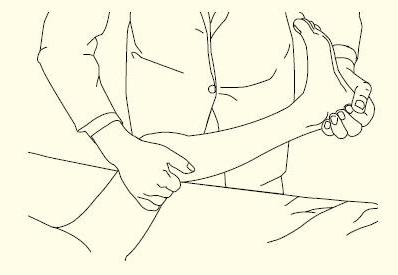Kernig's sign: Difference between revisions
Jump to navigation
Jump to search
Varun Kumar (talk | contribs) No edit summary |
Kiran Singh (talk | contribs) |
||
| (One intermediate revision by one other user not shown) | |||
| Line 1: | Line 1: | ||
{{CMG}} | {{CMG}} | ||
__NOTOC__ | __NOTOC__ | ||
==Overview== | ==Overview== | ||
| Line 13: | Line 13: | ||
==References== | ==References== | ||
{{Reflist}} | {{Reflist|2}} | ||
[[Category:Neurology]] | [[Category:Neurology]] | ||
[[Category:Medical signs]] | |||
[[Category:Signs and symptoms]] | [[Category:Signs and symptoms]] | ||
{{WikiDoc Help Menu}} | {{WikiDoc Help Menu}} | ||
{{WikiDoc Sources}} | {{WikiDoc Sources}} | ||
Latest revision as of 17:43, 9 June 2015
Editor-In-Chief: C. Michael Gibson, M.S., M.D. [1]
Overview
Presence of Kernig's sign suggestive of Meningitis.
Original description of Kernig's sign in 1882: During the examination, the patient was seated upright with hips and knees flexed. Kernig would then attempt to extend the patient’s knee. He noted that, in patients with meningitis, he was unable to extend the knee beyond 135 degrees without causing pain. [1]
Today, the maneuver is usually performed with the patient supine with hips and knees in flexion. Extension of the knees is attempted: the inability to extend the patient’s knees beyond 135 degrees without causing pain constitutes a positive test for Kernig’s sign. [2]
